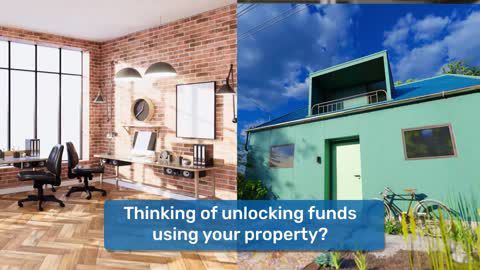Introduction
Planning to invest in property or develop your own? Understanding FAR (Floor Area Ratio) is the first step to unlocking the full potential of your real estate asset. FAR determines how much construction is permissible on a plot of land, shaping everything from project feasibility to long-term investment returns.
Whether you are a homeowner, developer, or investor, grasping the nuances of FAR can help you make informed decisions and maximise the value of your property. Learn how FAR impacts real estate development, the factors influencing it, and how to calculate it effectively.
If you are looking to fund your property development, consider a loan against property, which offers up to Rs. 10.50 crore to help you achieve your goals.
What is FAR in real estate?
FAR, or Floor Area Ratio, is a critical metric in real estate that defines the maximum allowable construction on a plot of land. It is expressed as a ratio between the total built-up area and the size of the land. Municipal and zoning regulations typically govern FAR, ensuring sustainable urban development and adherence to legal guidelines.
For example:
- If the FAR is 1 and the plot size is 2,000 sq. ft., you can construct up to 2,000 sq. ft. of built-up area.
- If the FAR is 2, you can construct up to 4,000 sq. ft. on the same plot.
This simple yet powerful concept influences everything from the design and scale of a building to its compliance with local laws.
FAR is integral to property planning, as it dictates the scope of construction and ensures that development aligns with legal and environmental standards.
Importance of FAR in property development
FAR plays a pivotal role in real estate development, impacting project feasibility, investment returns, and compliance with regulations. Here is why FAR is essential:
1. Maximising construction capacity
FAR determines the maximum built-up area on a plot, allowing property developers to optimise construction. For instance, a higher FAR enables more extensive construction, which is beneficial for residential or commercial projects in urban areas with limited land availability.
2. Adhering to legal regulations
Governments and municipal bodies use FAR to regulate urban development, ensuring that construction does not exceed permissible limits. This helps maintain the balance between infrastructure, environmental sustainability, and population density.
3. Enhancing investment potential
For investors, FAR is a key factor in evaluating the profitability of a property. A higher FAR increases the scope for development, making the property more valuable in the long run.
4. Supporting urban planning
FAR is a critical tool for urban planners to design cities that are efficient, sustainable, and liveable. By controlling construction density, FAR helps prevent overcrowding and ensures proper allocation of resources.
If you are planning a real estate project, a Bajaj Finserv Loan Against Property can help you unlock funds for development. Access competitive interest rates starting at 9% p.a. and enjoy funding of up to Rs. 10.50 crore.
How to calculate FAR in real estate?
Calculating FAR is straightforward and relies on a simple formula:
FAR = Total built-up area / Plot area
Here is a step-by-step guide to understanding the calculation:
- Determine the plot area: Measure the total size of the land in square feet.
- Calculate the built-up area: Add the floor area of all levels of the building, including basements, mezzanines, and upper floors.
- Apply the formula: Divide the total built-up area by the plot size to derive the FAR.
Example:
- Plot size: 5,000 sq. ft.
- Total built-up area: 10,000 sq. ft.
- FAR = 10,000 ÷ 5,000 = 2
This means the construction on the plot adheres to an FAR of 2.
Understanding FAR calculations helps property developers plan projects efficiently while complying with zoning laws.
Factors influencing FAR
Several factors determine the FAR for a property, and understanding these can help you navigate real estate planning more effectively:
1. Zoning regulations
Municipal zoning laws dictate FAR limits based on the location, type of property (residential, commercial, industrial), and intended use.
2. Property location
FAR allowances often vary depending on the area. Urban zones typically have higher FARs to accommodate dense development, while rural areas have lower FARs to preserve open spaces.
3. Municipal guidelines
Local governing bodies set FAR limits to ensure safe and sustainable development. These guidelines may also include restrictions on building height, setbacks, and open spaces.
4. Legal standards
Compliance with legal standards, such as environmental regulations, fire safety norms, and infrastructure capacity, can influence the FAR for a property.
When planning a real estate project, it is essential to consider these factors to ensure compliance and feasibility.
Impact of FAR on Homebuyers and Investors
Higher FAR → more housing units: Increases affordability as costs are distributed among more buyers.
Lower FAR → exclusivity: Fewer units mean higher pricing and premium property values.
Rental Potential: High FAR projects often attract tenants due to affordability and density.
Resale Value: Properties in areas with revised higher FAR may appreciate significantly.
Investment Planning: Investors analyse FAR to evaluate future development potential of land.
For buyers, FAR impacts pricing and lifestyle, while for investors, it defines profitability and project viability.
FAR in Real Estate Development: Challenges and Concerns (200–300 words)
Overuse of FAR: Can lead to overcrowding and strain infrastructure.
Traffic and congestion: High-rise clusters increase pressure on roads and public transport.
Environmental impact: Reduced green cover and higher pollution levels.
Balancing growth with sustainability: Authorities must ensure higher FAR doesn’t compromise quality of life.
Conclusion
FAR is a cornerstone of real estate planning and development, influencing everything from construction capacity to legal compliance. By understanding FAR, property owners and developers can optimise their projects, adhere to regulations, and unlock greater investment potential.
If you are planning a real estate project and need funding, a Bajaj Finserv Loan Against Property is an excellent option. You can access loans of up to Rs. 10.50 crore with competitive interest rates starting at 9% p.a., enabling you to turn your property vision into reality. By using your property as collateral, you can unlock access to large funds of up to Rs. 10.50 Crore*—it is a smart way to manage your finances with ease! Get funds within 72 hours* of approval.
Start your journey towards smarter property development today!











